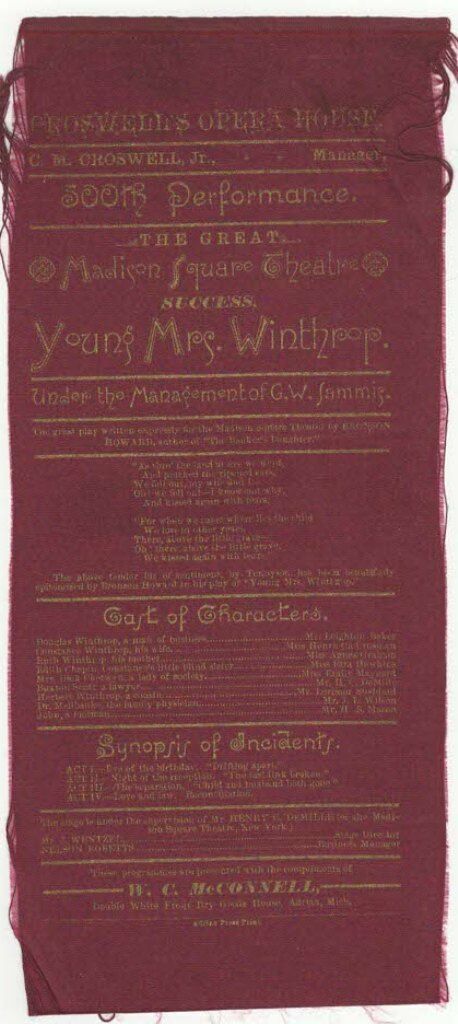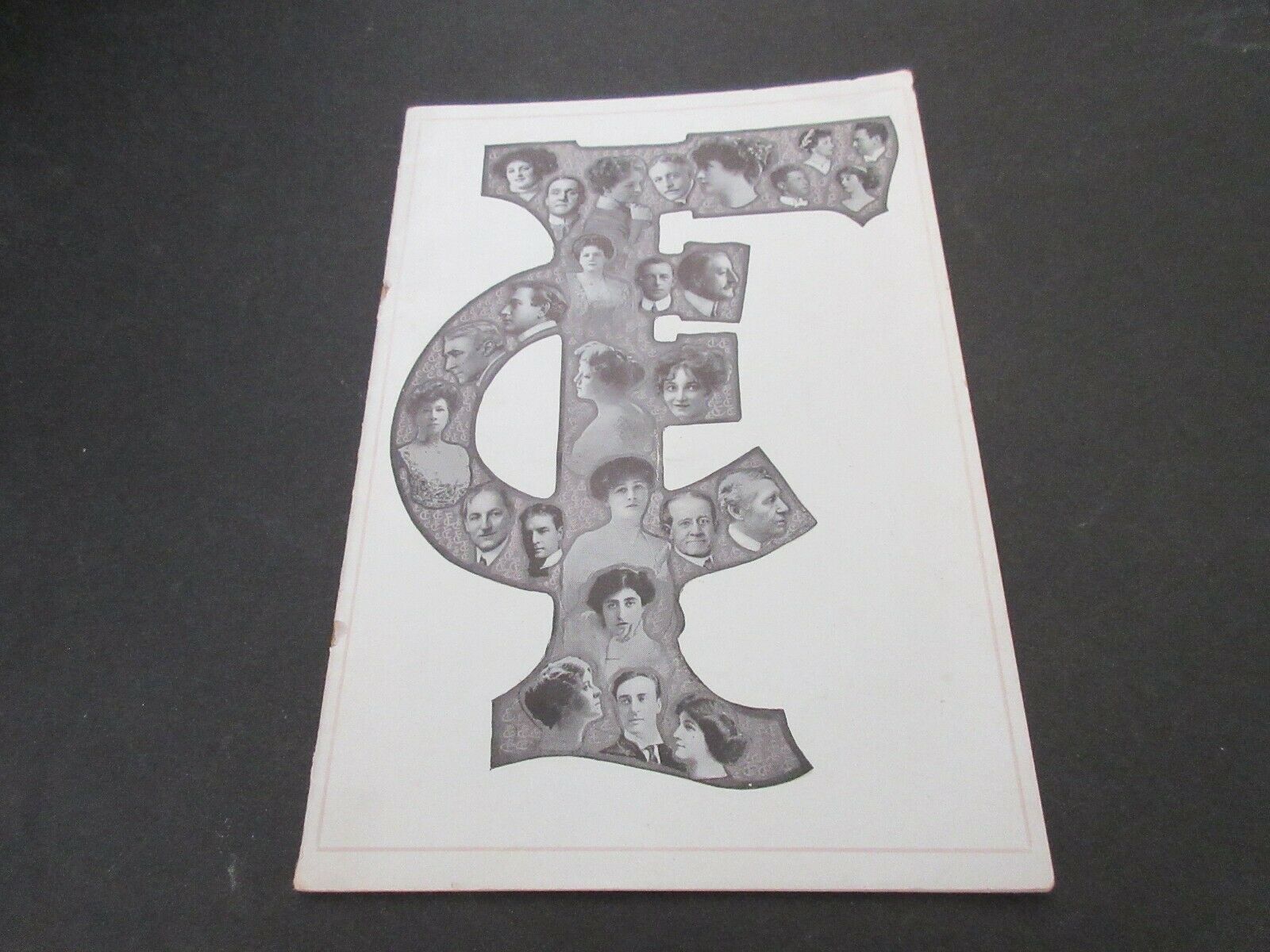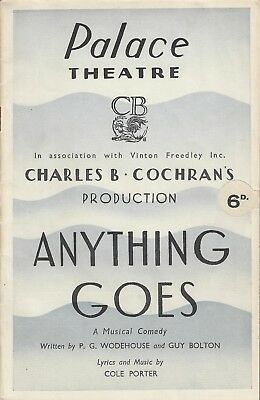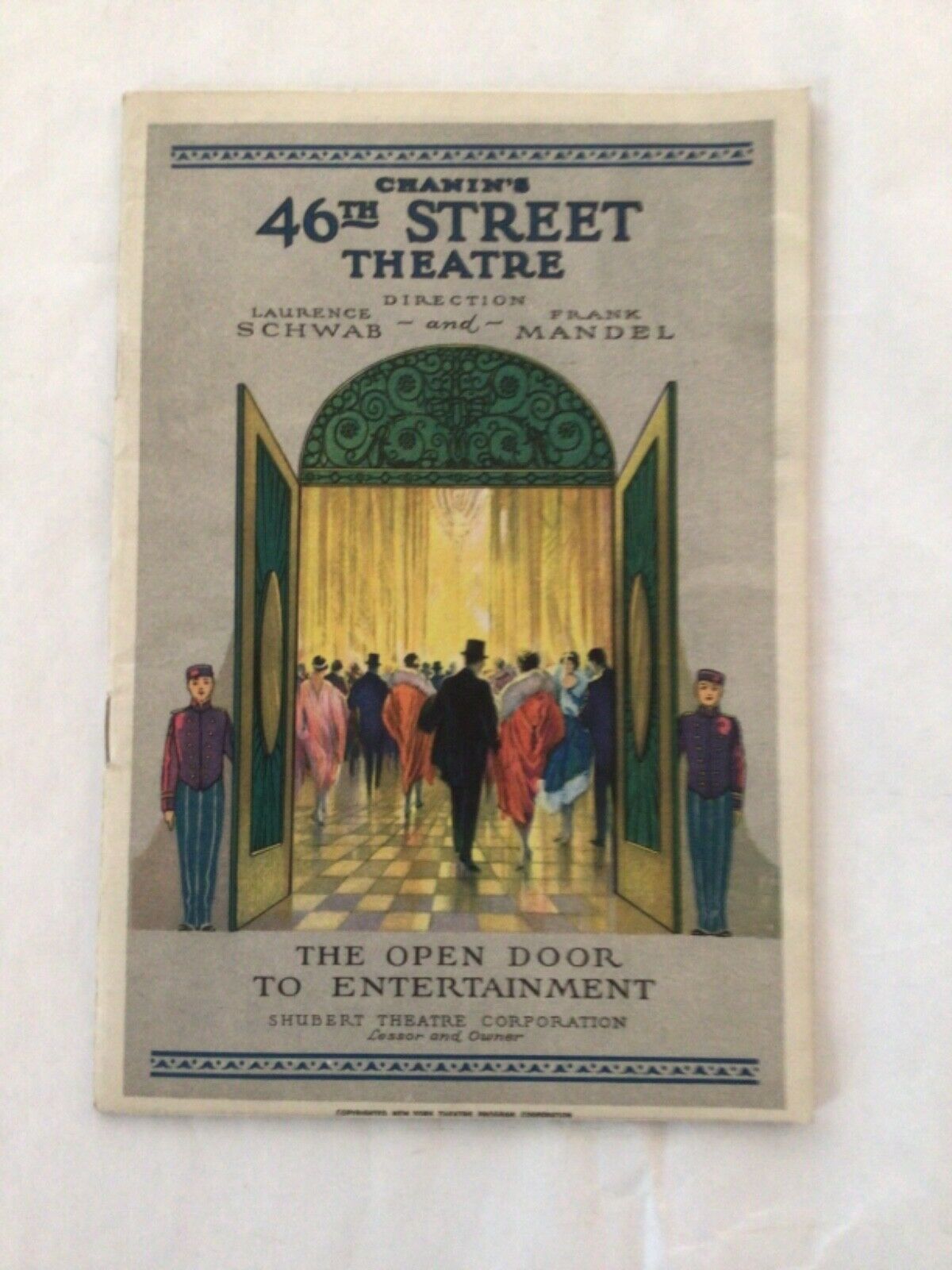-40%
*MADISON SQUARE THEATRE COMPANY RARE 1888 RED & GOLD SILK SOUVENIR PROGRAM*
$ 42.23
- Description
- Size Guide
Description
An extraordinary original red and gold silk souvenir program circa 1883 for the 300th Performance of Bronson Howard's play Young Mrs Winthrop, the great Madison Square Theatre success. Dimensions nine by four inches. Light wear otherwise good. See theatre history below.Shipping discounts for multiple purchases. Inquiries always welcome. Please visit my other eBay items for more early theatre, opera, film, magic, and historical autographs, photographs, programs and broadsides and great actor and actress cabinet photos and CDV's.
From Wikipedia:
The Madison Square Theatre was a Broadway Theatre in Manhattan, on the south side of 24th Street between Sixth Avenue and Broadway (which intersects Fifth Avenue near that point.) It was built in 1863, operated as a theater from 1865 to 1908, and demolished in 1908 to make way for an office building. The Madison Square Theatre was the scene of important developments instage technology, theatre design, and theatrical tour management. For about half its history it had other names including the Fifth Avenue Theatre, Daly’s Fifth Avenue Theatre, Hoyt’s Madison Square Theatre, and Hoyt’s Theatre.
Merchant and real estate magnate Amos R. Eno leased land next to his Fifth Avenue Hotel in 1862[1] to James Fisk, Jr., who built an after-hours gold trading exchange during the U.S. Civil War. The “regular stock exchange” found the competition disruptive and soon shut down the operation.[2] The building became a performance space, the Fifth Avenue Opera House, used by George Christy and other minstrel shows from 1865-1867 when C.H. Garland took it over as the Fifth Avenue Theatre for burlesque shows. The theatre closed at the beginning of 1868 after one minstrel show manager murdered another after attending a performance. John Brougham briefly managed it as Brougham’s Theatre in 1869, followed by building owner Fisk, who restored the Fifth Avenue name and presented French opéra bouffe.[3]
Augustin Daly became manager later in 1869, sometimes calling it the Fifth Avenue Theatre, sometimes Daly’s Fifth Avenue or simply Daly’s Theatre. The house (seating area) during this period was described as being “plated with mirrors for the illusion of immensity,” with a palette of “blush rose, neatly framed in white, with delicate boundaries of gold.” Capacity was 900, or 1,000 with standees, and gas jets provided interior lighting.[2] When the theatre burned to the ground after a matinee on New Year’s Day 1873, Daly moved his company and the Fifth Avenue Theatrename to an existing theatre on 28th and Broadway.[4] The name similarities continue to cause confusion today. It was four years until a new building appeared, first called the Fifth Avenue Hall, where a magician named Heller performed for several months in 1877, then Minnie Cumming’s Drawing Room Theatre.
George and Marshall Mallory then erected yet another building on the site, for actor-director-playwright Steele Mackaye who had produced a few shows in the small hall in 1879 under a name they kept, the Madison Square Theatre. Mackaye's famous stage technology improvements included the "double stage", an elevator the size of the full stage that was raised and lowered by counter-weights and reduced scene changes to one or two minutes from five or more. The double stage required the builders to excavate an extra-deep foundation.[5] Ventilation featured a primitive form of air conditioning, with cool air drawn in from the roof and circulated to perforations under the seats. To increase stage-room for action and house-room for seats, the orchestra was in a balcony above the stage, and the conductor received "cues by means of electric signals and reflectors." Interior decoration was meant to evoke an intimate drawing-room, with imitation-mahogany trim, gold and pale colors, Shakespeare illustrations,[6] and a Tiffany-designed drop curtain that burned in an otherwise uneventful fire a few weeks after the reopening.[7]
The Mallory brothers and Mackaye soon fell out, and Mackaye lost the rights to his single commercially successful play, Hazel Kirke, and his position at the theatre. By then Business Manager Daniel Frohman had hired his brothers Gustaveand Charles. They used Hazel Kirke's long run to implement the nation’s first theatrical touring organization with multiple companies of a single play and developed their promotional and management skills.[8] The Frohmans, along withMarcus Klaw and Abraham Lincoln Erlanger, who met while working in the Madison Square Theatre's publicity department,[9] and David Belasco, who also worked at the theatre in this period, became major forces in American theatrical management over the next 35 years.
The Rev. Dr. George Mallory, owner (with his brother) and editor of the Episcopal Church publication The Churchman, sought to use their ownership of the theatre "to elevate the moral tone of the American stage", among other things by running only American-written plays cast almost exclusively with American actors.[10] The Mallorys managed the theatre on this principal themselves for four years. In 1885 they brought in impresario A.M. Palmer who bought them out and managed until 1891, with a more conventionally international mix of plays. Palmer was followed by playwright/director Charles H. Hoyt, along with Charles Thompson who died in 1893 and Frank McKee, who ran the theatre after Hoyt became incapacitated in 1898. During this time the theatre was variously known as Hoyt’s Madison Square Theatre, or simply Hoyt’s Theatre.
The Madison Square Theatre name returned in 1898, and remained through the management of Walter N. Lawrence until Eno's descendents demolished the building and the Fifth Avenue Hotel in 1908.[11] By that time the "Theater District" had moved uptown to the Times Square area around 42nd Street.









